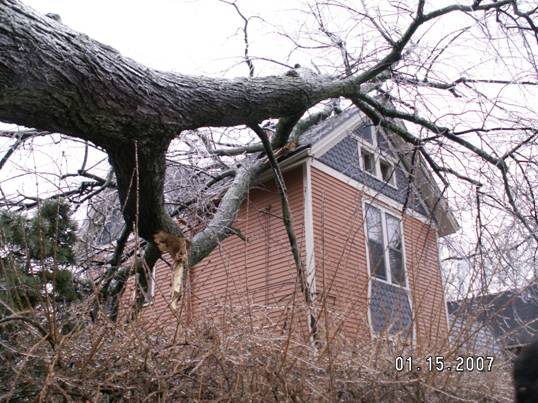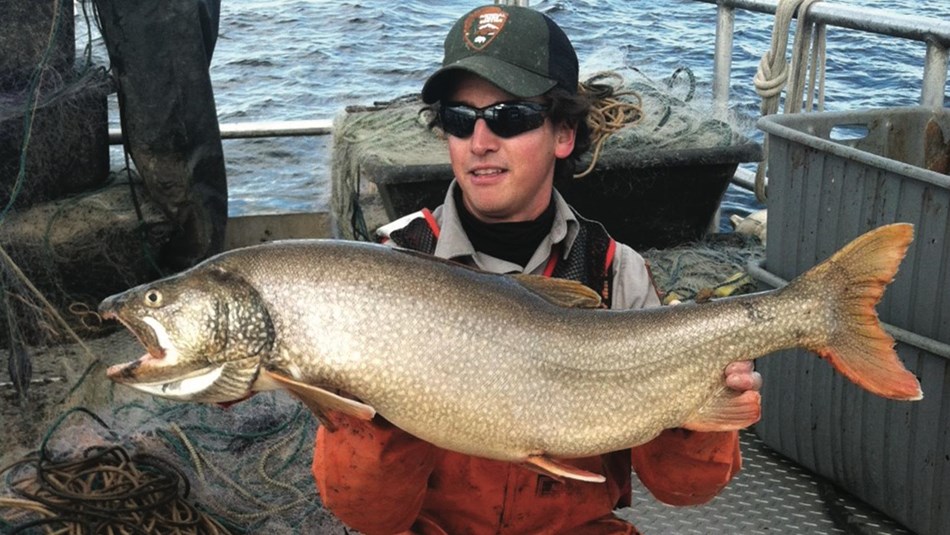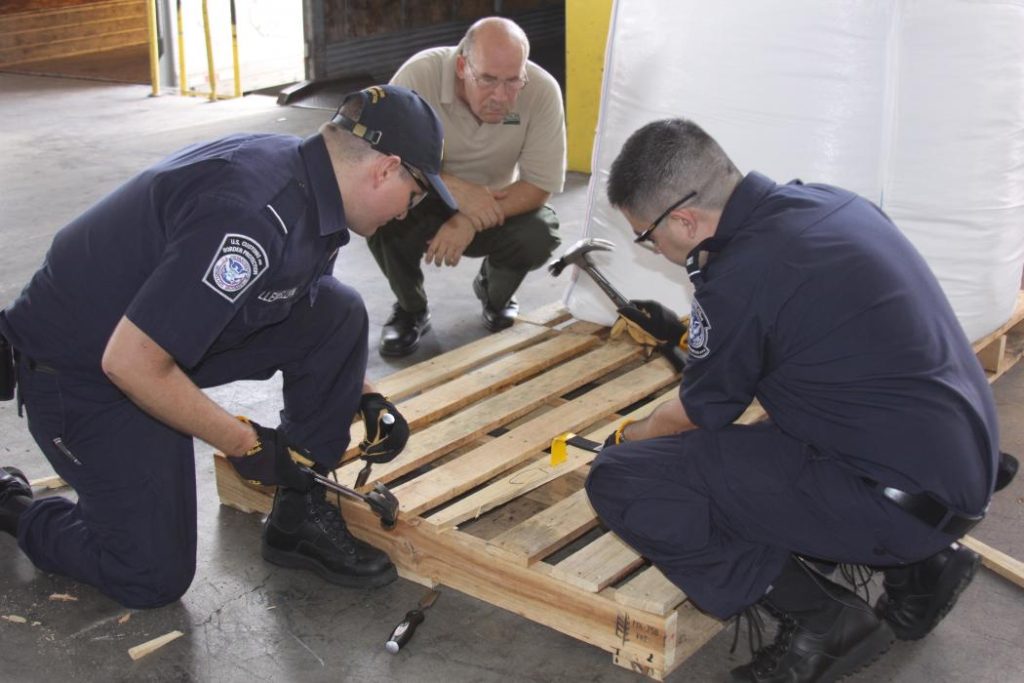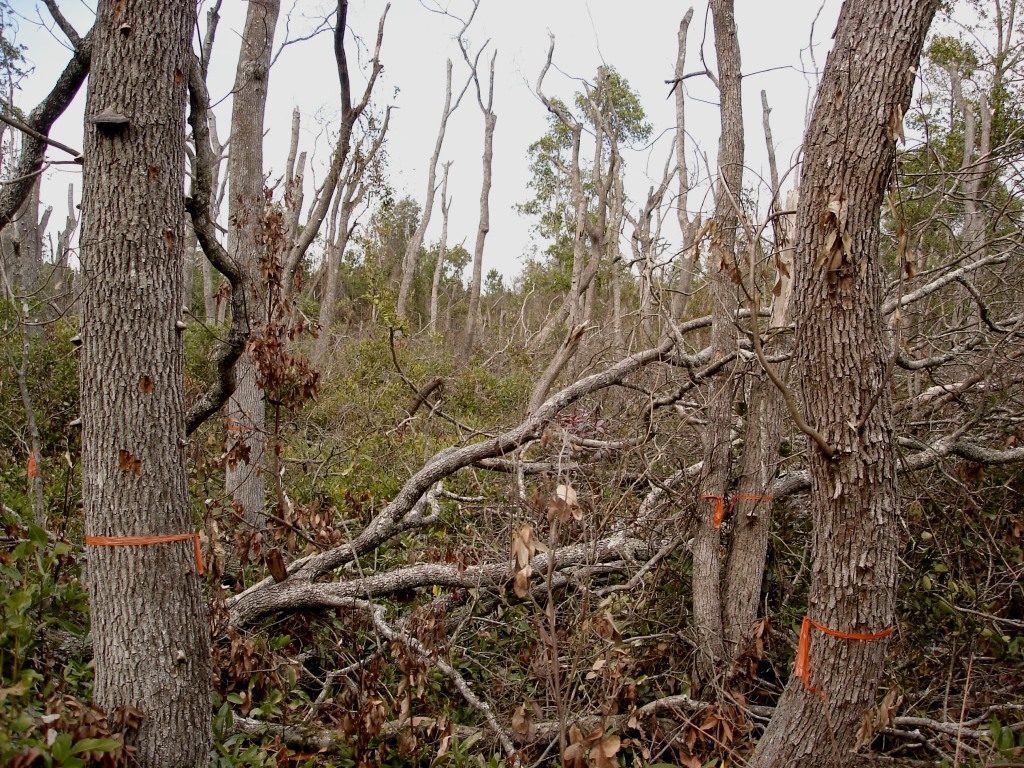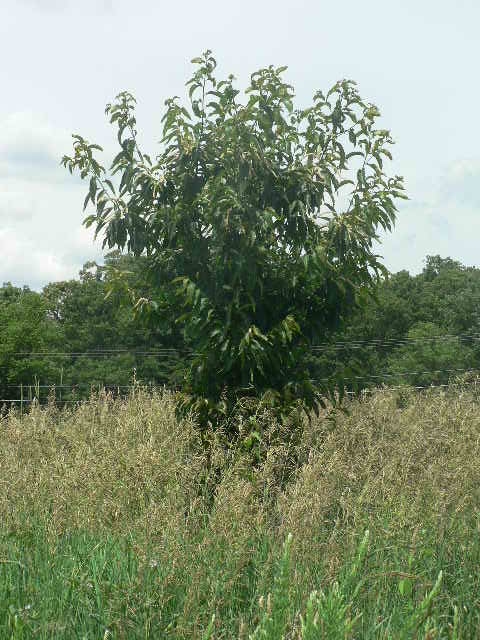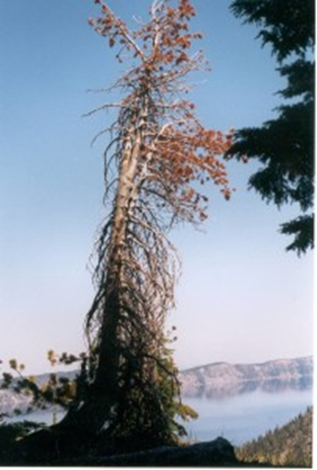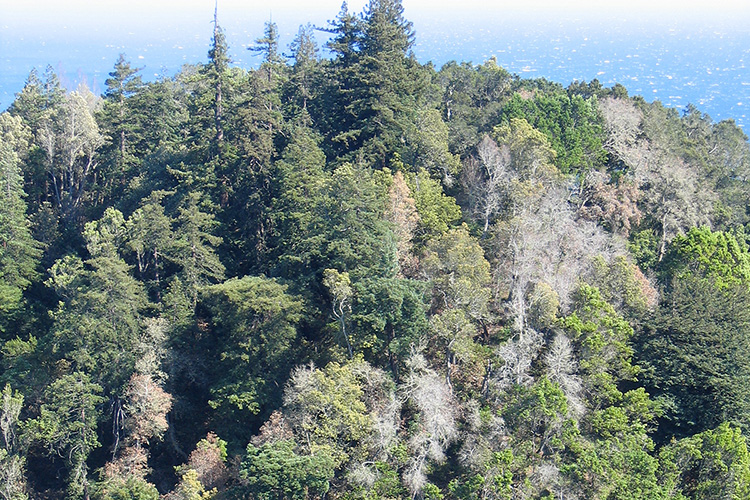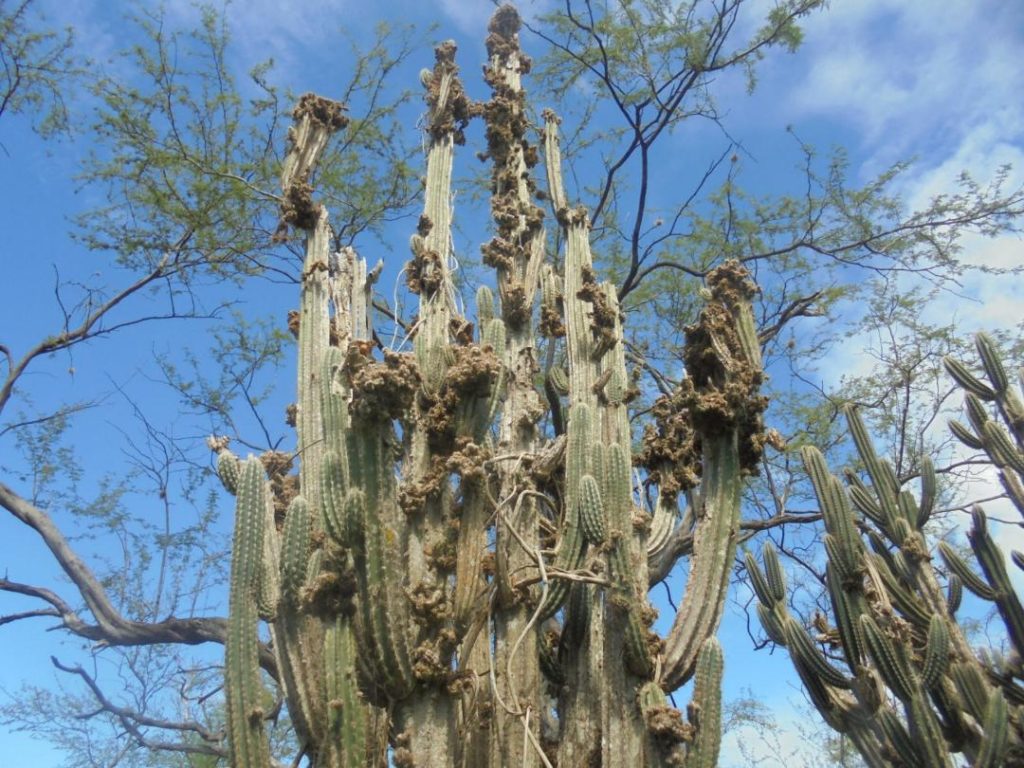
photo by Blake Trester, National Park Service
The cacti that are such important components of desert ecosystems across nearly 2 million square miles straddling the U.S.-Mexico border are under threat from non-native insects – as I have noted in earlier blogs. Of course, cacti are important in other ecoregions, too – I wrote recently about the columnar cacti in the dry forests of Puerto Rico.
Flat-padded prickly pear cacti of the genus Opuntia are threatened by the cactus moth, Cactoblastis cactorum.
In 1989, the cactus moth was found in southern Florida, to which it had spread from the Caribbean islands (Simonson 2005). Recently, the moth was found to have spread west as far as the Galveston, Texas, area and near I-10 in Columbus, Texas, about 75 miles west of central Houston (Stephen Hight, pers. com.) Two small outbreaks on islands off Mexico’s Caribbean coast have been eradicated.
In Florida, the cactus moth has caused considerable harm to six native species of prickly pear, three of which are listed by the state as threatened or endangered.
When the cactus moth reaches the more arid regions of Texas, it is likely to spread throughout the desert Southwest and into Mexico. In the American southwest, 31 Opuntia species are at risk; nine of them are endemic, one is endangered. Mexico is the center of endemism for the Opuntia genus. In Mexico, 54 Opuntia species are at risk, 38 of which are endemic (Varone et al. 2019; full citation at end of this blog).
The long-term effects of the cactus moth on these North American Opuntia are unknown because there may be substantial variations in tolerance. The attacks observed in the Caribbean islands have shown great variability in various cactus species’ vulnerability (Varone et al. 2019).
The Opuntia cacti
support a diversity of pollinators as well as deer, javalina (peccaries),
tortoises, and lizards. Prickly pears also shelter packrats and nesting birds (which
in turn are fed on by raptors, coyotes, and snakes), and plant seedlings. Their
roots hold highly erodible soils in place (Simonson 2005).
While scientists have been concerned about the possible impacts of the cactus moth since it was detected in Florida 30 years ago, a substantial response began only 15 years later. The U.S. Department of Agriculture began trying to slow the spread of the cactus moth in 2005 (Mengoni Goñalons et al. 2014), with a focus on surveys and monitoring, host (cactus) removal, and release of sterile males. This program was successful at slowing the moth’s spread and eradicating small outbreaks on offshore islands of Alabama, Mississippi, and Mexico.
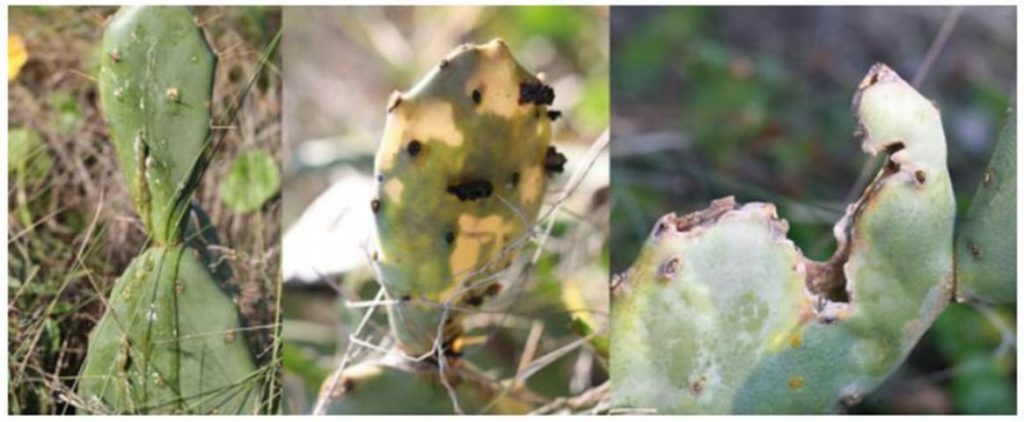
photo by Christine Miller, UF/IFAS
However, the moth continued to spread west and the program never received an appropriation from Congress. The primary funding source was a US – Mexico Bi-National Invasive Cactus Moth Abatement Program. Both countries contributed funds to support the research and operational program to slow the spread in the U.S. Funds were provided through USDA Animal and Plant Health and Inspection Service (APHIS) and the Mexican Secretariat of Agriculture, Livestock, Rural Development, Fisheries and Food (SEGARPA). Unfortunately, funding was reduced by both entities and became inadequate to maintain the Bi-National Program.
Therefore, in 2012, APHIS abandoned its regional program and shifted the focus to biocontrol. This is now considered the only viable control measure in the desert Southwest where vulnerable cacti are numerous and grow close together. The biocontrol project has been funded since 2012 through the Plant Pest and Disease Management and Disaster Prevention program (which receives funding through the Farm Bill). It has received a total of slightly more than $2 million over seven years. More than half the funds went to the quarantine facility to support efforts to rear non-target hosts and verify the biocontrol agent’s host specificity. About a quarter of the funds supported complementary work of an Argentine team (both the cactus moth and the most promising biocontrol agent are native to Argentina). Much smaller amounts have supported U.S.-based scientists who have studied other aspects of the cactus moth’s behavior and collected and identified the U.S. moths being tested for their possible vulnerability to attack by a biocontrol wasp.
Here are details of what these dedicated scientists achieved in just the past seven years at the relatively low cost of roughly $2 million. Unfortunately, the project now faces a funding crisis and we need to ensure they have the resources to finish their work.
Some Specifics of the BioControl Program
After literature reviews, extensive collections, and studies in the cactus moth’s native habitat in Argentina (Varone et al. 2015), a newly described wasp, Apanteles opuntiarum (Mengoni Goñalons et al. 2014), has been determined to be host specific on Argentine Cactoblastis species and the most promising candidate for biocontrol. Wasps were collected in Argentina and sent to establish a colony in a quarantine facility in Florida to enable host specificity studies on North American Lepidoptera (Varone et al. 2015).
Quarantine host specificity studies and development of rearing technology has not been straightforward. Initially, it was difficult to achieve a balanced male/female ratio in the laboratory-bred generations; this balance is required to maintain stable quarantine laboratory colonies for host range testing. This difficulty was overcome. A second challenge was high mortality of the cactus-feeding insects collected in the Southwest that were to be test for vulnerability to the biocontrol wasp. These desert-dwellers don’t do well in the humid, air-conditioned climate of the quarantine facility! For these difficult-to-rear native insects, scientists developed a molecular genetics method to detect whether eggs or larvae of the cactus moth parasitoid were present inside test caterpillars after they were exposed to the wasps. For easy to rear test insects, caterpillars are exposed to the wasps and reared to adulthood. Host specificity tests have been conducted on at least five species of native U.S. cactus-feeding caterpillars and 11 species of non-cactus-feeding caterpillars (Srivastava et al. 2019; Hight pers.comm.).
To date there has been no instance of parasitism by Apanteles opuntiarum on either lepidopteran non-target species or non-cactus-feeding insects in the Florida quarantine or in field collections in Argentina (Srivastava et al. 2019; Varone et al. 2015; Hight pers.comm.).
The scientists expected to complete host-specificity testing in the coming months, then submit a petition to APHIS requesting the release of the wasp as a biocontrol agent. Unfortunately, the project’s request for about $250,000 in the current year was not funded. This money would have funded completion of the host specificity testing, preparation of a petition to APHIS in support of release of the biocontrol agent into the environment, and preparation of the release plan.
Meanwhile, what can we expect regarding the probable efficacy of the anticipated biocontrol program?
Some of the wasp’s behavioral traits are encouraging. The wasp is widely present in the range of the cactus moth, and persisted in these areas over the years of the study. The wasp can deposit multiple eggs with each “sting”. Multiple wasps can oviposit into each cactus moth without detriment to the wasp offspring. Unmated wasp females produce male offspring only, whereas mated females produce mixed offspring genders. In the field, female wasps attack cactus moth larvae in a variety of scenarios: they wait at plant access holes to sting larvae when they come outside to defecate; they attack larvae when they are moving on the surface of the pads; they can sting the youngest cactus moth larvae through the thin plant wall of mined the pads; and they enter large access holes created by older larvae and attack larger larvae. The wasps are attracted by the frass (excrement) left on the outside of the cactus pads by cactus moth larvae (Varone et al. 2020).
However, I wonder about the extent to which the cactus moth is controlled by parasitoids in Argentina. Cactoblastis eggs are killed primarily by being dislodged during weather events (rain and wind) and by predation by ants. First instar larvae are killed primarily by the native Argentine cactus plants’ own defenses – thick cuticles and release of sticky mucilage when the young larvae chew holes into the pads where they enter and feed internally. As larvae feed and develop inside the pads, the primary cause of mortality is natural enemies.
Of all the parasitoid species that attack C. cactorum, A. opuntiarum is the most abundant and important. When the larvae reach their final state (6th instars), they leave the pads and find pupation sites in plant litter near the base of the plants. It is at this stage that the parasitism from A. opuntiarum is detected in the younger larvae that were attacked while feeding inside pads. As the moth larva begins to spin silk into which to pupate, larvae of the wasp erupt through the skin of the caterpillar and pupate within the silk spun by the moth. Predation by generalists (ants, spiders, predatory beetles) accounted for high mortality of the unprotected last instar and pupae (Varone et al. 2019).
Finally, the cactus moth has three generations per year when feeding on O. stricta in the subtropical and tropical coastal areas of the Americas and the Caribbean. In Argentina, on its native host, the moth completes only two generations per year (Varone et al. 2019).
How to Get the Program Support Needed
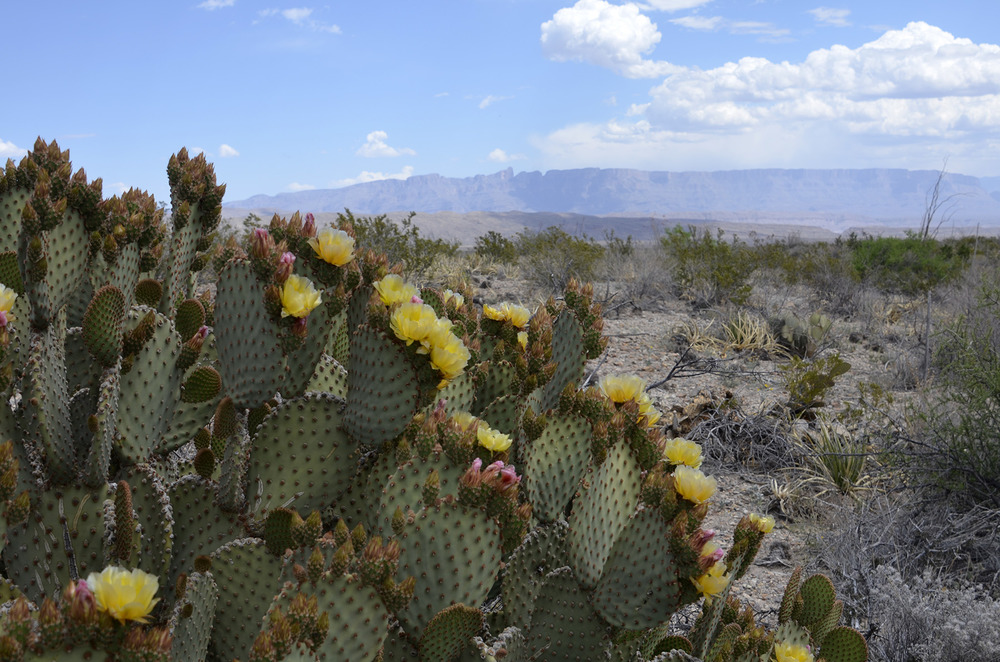
Photo by Cookie Ballou,
National Park Service
To date, no organized constituency has advocated for protection of our cacti from non-native insect pests. Perhaps now that the Cactoblastis moth is in Texas, the threat it represents to our desert ecosystems will become real to conservationists and they will join the struggle. The first step is to resolve the funding crisis so that the agencies can complete testing of the biocontrol agent and gain approval for its release. So now there is “something people can do” – and I hope they will step forward.
I hope Americans are not actually indifferent to the threat that many cacti in our deserts will be killed by non-native insects. Many are key components of the ecosystems within premier National Parks, and other protected areas. Cacti also are beautiful treasures in botanical gardens. I hope conservationists will agree that these threats must be countered, and will help to ensure funding of the final stages of the biocontrol tests.
Sources
Mengoni Goñalons, C., L. Varone, G. Logarzo, M. Guala, M.
Rodriguero, S.D. Hight, and J.E. Carpenter. 2014. Geographical range & lab
studies on Apanteles opuntiarum (hymenoptera: braconiDae) in AR, a candidate
for BC of Cactoblastis cactorum (Lepidoptera: Pyralidae) in North America. Florida
Entomologist 97(4) December 2014
Simonson, S.E., T. J. Stohlgren, L. Tyler, W. Gregg, R.
Muir, and L. Garrett. 2005. Preliminary assessment of the potential impacts and
risks of the invasive cactus moth, Cactoblastis cactorum Berg, in the U.S. and
Mexico. Final Report to the International Atomic Energy Agency, April 25, 2005
© IAEA 2005
Srivastava, M., P. Srivastava, R. Karan, A. Jeyaprakash, L. Whilby, E. Rohrig, A.C. Howe, S.D. Hight, and L. Varone. 2019. Molecular detection method developed to track the koinobiont larval parasitoid Apanteles opuntiarum (Hymenoptera: Braconidae) imported from Argentina to control Cactoblastis cactorum (Lepidoptera: Pyralidae). Florida Entomologist 102(2): 329-335.
Varone, L., C.M. Goñalons, A.C. Faltlhauser, M.E. Guala, D. Wolaver, M. Srivastava, and S.D. Hight. 2020. Effect of rearing Cactoblastis cactorum on an artificial diet on the behavior of Apanteles opuntiarum. Applied Entomology DOI: 10.1111/jen.12731.
Varone, L., G. Logarzo, J.J. Martínez, F. Navarro, J.E. Carpenter, and S.D. Hight. 2015. Field host range of Apanteles opuntiarum (Hymenoptera: Braconidae) in Argentina, a potential biocontrol agent of Cactoblastis cactorum (Lepidoptera: Pyralidae) in North America. Florida Entomologist — Volume 98, No. 2 803
Varone, L., M.B. Aguirre, E. Lobos, D. Ruiz Pérez, S.D. Hight, F. Palottini, M. Guala, G.A. Logarzo. 2019. Causes of mortality at different stages of Cactoblastis cactorum in the native range. BioControl (2019) 64:249–261
Posted by Faith Campbell
We welcome comments that supplement or correct factual information, suggest new approaches, or promote thoughtful consideration. We post comments that disagree with us — but not those we judge to be not civil or inflammatory.


